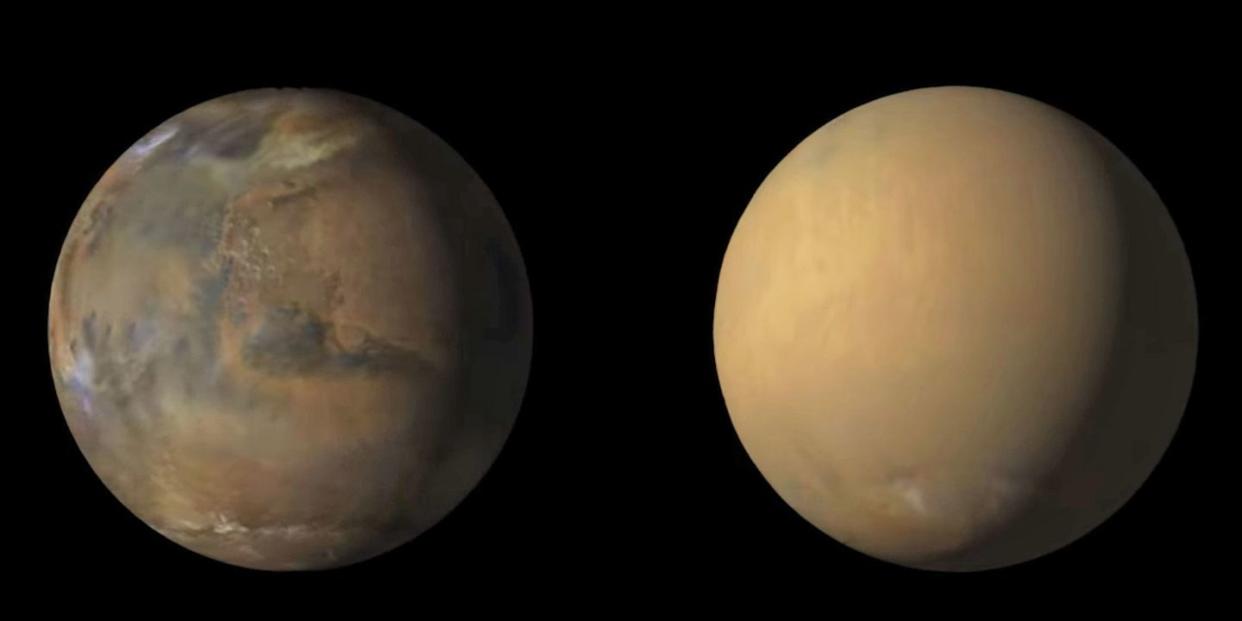This Massive Dust Storm Could Engulf Mars for Months

Every six to eight years, massive dust storms can envelop Mars’s whole surface. NASA’s Martian probes are currently watching one unfold over the Red Planet. Scientists saw a small-scale dust storm begin on May 30th, and by June 20th, it’d gone “global,” engulfing the whole planet. For the NASA Opportunity rover, visibility dropped from that of a sunny day to an overcast one. Because the rover runs on solar energy, researchers suspended it to preserve its batteries. According to NASA, it could take as long as September before the dust starts to settle, and the Opportunity starts reporting back.
Meanwhile, numerous other Mars orbiters are helping scientists understand the dust storm. “This is one of the largest weather events that we’ve seen on Mars,” since spacecraft observations began in the 1960s, said Michael Smith, a scientist at NASA’s Goddard Spaceflight Center. Smith and other scientists are trying to understand how small, regional storms swarm to become such a large one. They’re also recording how the dust storm changes the planet’s atmospheric temperatures, which can change winds, which in turn can amplify the storm by stirring up more dust from the planet’s surface. “The very fact that you can start with something that’s a local storm, no bigger than a small [US] state, and then trigger something that raises more dust and produces a haze that covers almost the entire planet is remarkable,” said Rich Zurek, the project scientist for MRO, which maps the evolution of the storm daily in color images and atmospheric temperature.
Meanwhile, the Mars Curiosity is on a mission to acquire rock samples and study the storm from the surface of Mars itself, and another orbiter is studying Mars’ high atmosphere, 100 kilometers above the surface, where the dust doesn't reach. Every time you see Mars in the sky in the weeks ahead, NASA advises, “remember how much data scientists are gathering to better understand the mysterious weather of the Red Planet.”
(via NASA)
('You Might Also Like',)

